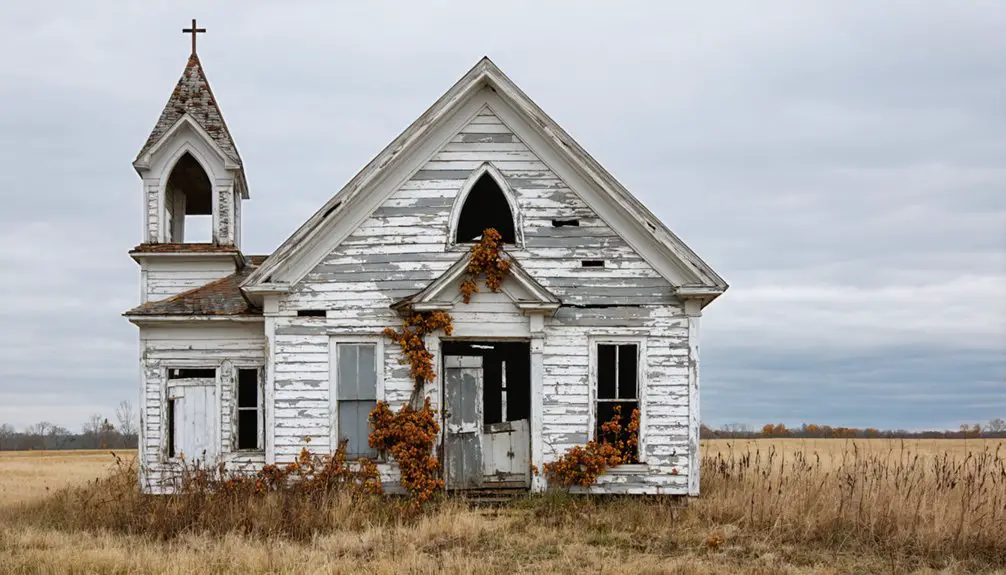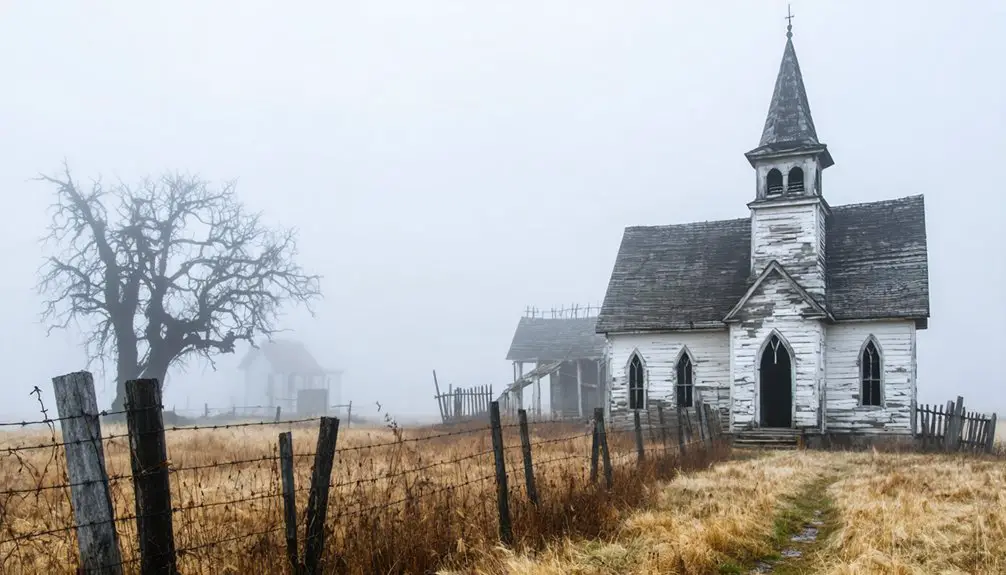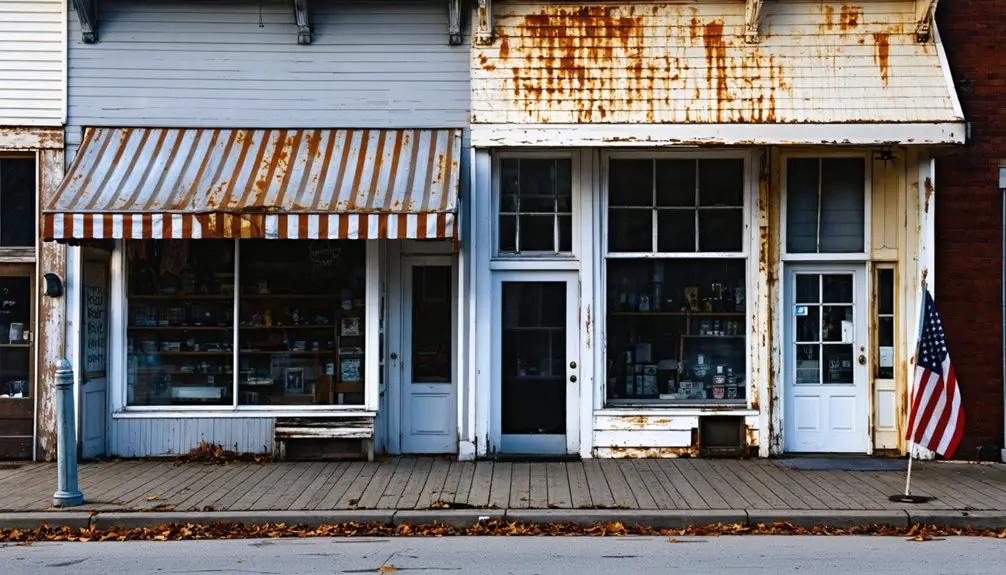Missouri has been known for its rich cultural heritage and natural resources, crossed by the Missouri River. It became the 24th State of North America on August 10, 1821, when President James Monroe signed a proclamation for the admission of Missouri into the union.
There are over 45 ghost towns in Missouri. The state is also known as the “Cave State” due to its 7,300 recorded caves. Many of Missouri’s abandoned places are part of the legendary Route 66, a historic highway with exciting stories and ghostly landmarks.
Missouri is not only known for its various nicknames or affluent rivers but also its dozens of mystical places shadowed by their past. These are haunted places where time seems to standstill. We invite you to take a look at four of the most well-known ghost towns in this Midwestern State.
Georgia City, Missouri
Georgia City is located 9 miles northeast of Joplin, the fourth largest metropolitan area in Missouri, and rose in 1868 when the founder John C. Guinn established Jasper County. Its population grew to 200 people within a year of its foundation. In 1870, the founders opened a postal office in operation until 1904.
However, the town started to decline ten years later, and its population decreased to 50 people in 1883. Later on, residents began to emigrate and left the old town. It was finally abandoned by a petition from the founder’s daughter, requesting to change its location to a farm.
The only remnant of the former city is the Georgia City Cemetery in Oronogo. It is located about 3 miles east and 1 mile north of Asbury and is well maintained. Occasionally there is a new burial, but it is primarily a tourist attraction surrounded by farmland.
The cemetery has become a popular destination, getting visitors intrigued by its haunting beauty. This type of heritage tourism has become a trend among those travelers interested in the past. Cultural heritage tourism helps preserve these abandoned places; some see it as a blend of education, entertainment, preservation, and a way of reinforcing identity.
Georgia City also preserved a historic bridge, built in 1871, located over the Spring River in Jasper County, 3.3 miles southeast of Asbury. The bridge was closed to traffic in 1986 and was going to be demolished, but in 1997, landowners and other interested institutions started raising funds to purchase the bridge and keep it alive.
The community transported the bowstring truss to King Jack Park, where it will only be accessible by pedestrians. There is a bronze plaque and stone marker at the bridge’s entrance with historical facts.
Times Beach, Missouri
Times Beach was founded in 1925. This town in St. Louis County was home to more than two thousand people and was a frequent destination for wealthy people traveling from St Louis. The old St. Louis Times newspaper promoted the town by offering a six-month newspaper subscription if you purchased a 20 x 100-foot lot for $67.50.
However, after World War II, the Great Depression and gasoline rationing provoked a decline in summer homes; the remaining population stayed until 1970, living in low-income housing. Since residents didn’t have enough income to maintain the roads, the streets deteriorated, and it became a city of dust.
To suppress the dust, citizens decided to pave the streets. The chemical company, Hoffman-Taff, sprayed material on the roads to stop the dust. However, they used a highly toxic chemical mix with dioxin and waste oil. In 1982, a heavy flood hit the town, and the toxic mix spread beyond the roads covering the city, which led to an environmental disaster.
The government needed to evacuate the entire town in 1983 as most people were getting sick. Horses, birds, and small animals started to die due to dioxin contamination. After that significant disaster, the city went empty, and all residents relocated.
One of its current tourist attractions is Route 66 State Park, which opened in 1999. Visitors can genuinely connect with nature, hiking through destroyed buildings’ ruins and viewing more than 40 bird species.
Arlington, Missouri
Located 13 miles southwest of Rolla, Arlington flourished in 1867. Historians say this town became famous due to the Stony Dell Resort. This popular hotel was conveniently located near Route 66, a popular destination for locals and celebrities.
It was also in demand among the military troops living a short drive from this fancy location. Many people enjoyed the resort’s beautiful stone buildings, cafes, tennis courts, dance halls, and one of the largest swimming pools during the weekends.
Unfortunately, in 1967, the city started to change. Mobility caused the Route 66 road to be rerouted for a better traffic flow, and the town’s main street became a dead end. The Arlington River Resort was the last business remaining, but visitors began to decrease, which led to the permanent closing of the building. As soon as the hotel closed, its citizens decided it needed to be torn down, but some ruins remained.
Despite becoming a ghost town, approximately 20 people still live there. However, the city ceased to be autonomous and is now part of Newburg.
Red Oak, Missouri
Red Oak has an exciting story of resurgence, and its building sites were turned into an art piece. The original town’s location was 20 miles northeast of Carthage. It was established in 1877 but had a short life and disappeared in 1922. As with many other cities, World War II caused a massive migration of citizens to larger towns, leading to its demise.
However, Lowell Davis, an artist who grew up in this town, resisted watching his hometown fade. After a long period of living in other cities, he returned to his hometown in 1970 to discover that it had become a ghost town. He then bought homes and businesses from the original townsite and moved them to a farm near Carthage, where he re-created his old hometown into what is presently known as Red Oak II.
The restored town is a prominent tourist location, visited by dozens of people attracted to the enigmatic beauty of historic feed and seed stores, blacksmith shops, jails, country churches, and schoolhouses. Red Oak II is an authentic living piece of art.
Final Thoughts
A ghost town is an abandoned city, town, or village with little to no population. These deserted places can have remaining buildings and ruins, and some become tourist attractions because of their historic architecture.
There can be diverse reasons a town becomes a ghost town, from economic failure, natural or human-caused disasters, government actions, and world-changing events such as wars or nuclear disasters. Other factors leading to ghost towns may include economic activities that shift to different locations, roads that no longer access the city, political shifting, extreme weather conditions, and massive emigration.
After learning about the history of these ghost towns, it is curious to deduce that these now abandoned ghost towns were formerly prosperous cities. Despite their current appearance, some people find beauty in their remains and the nostalgia caused by their empty streets full of memories.



